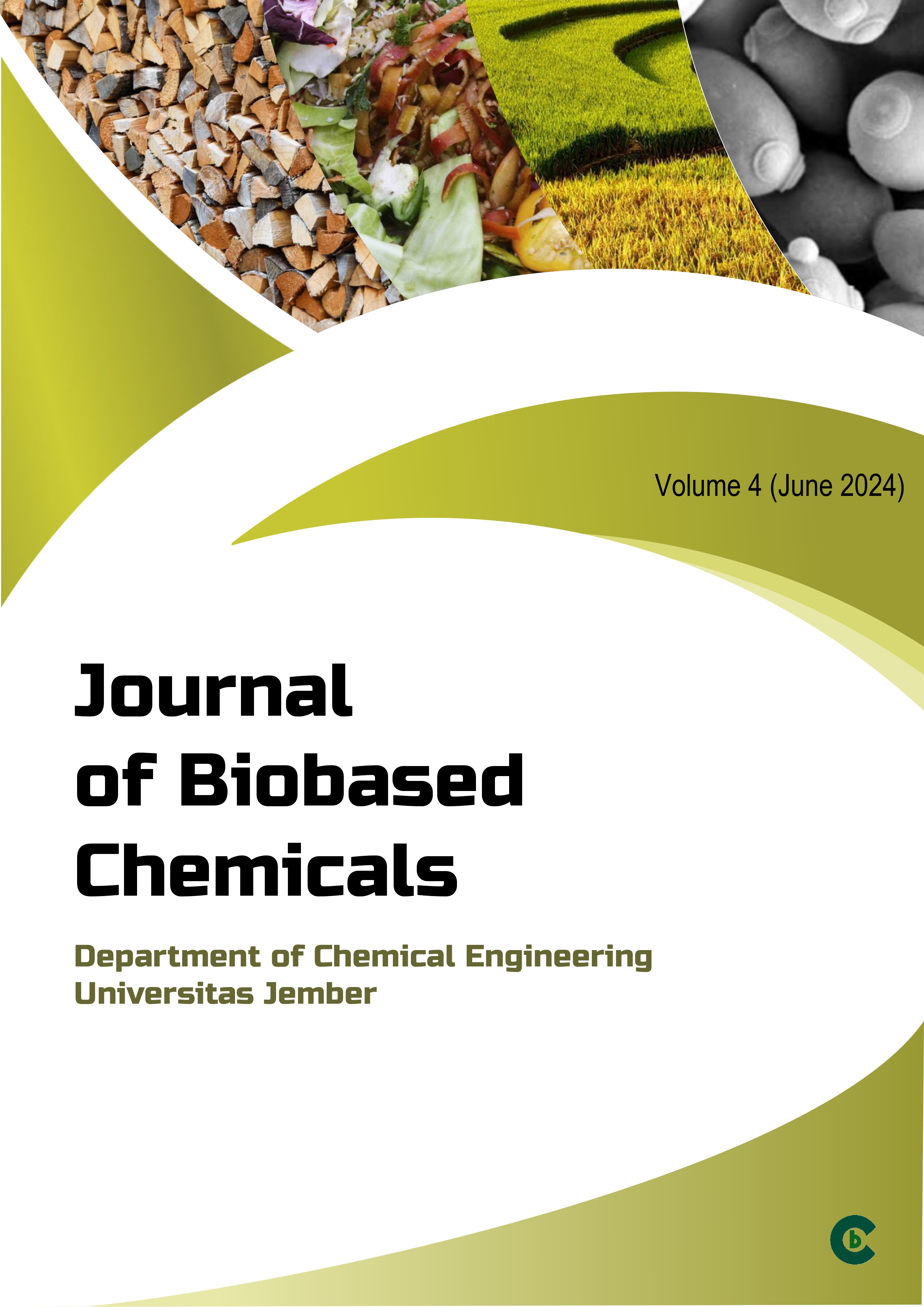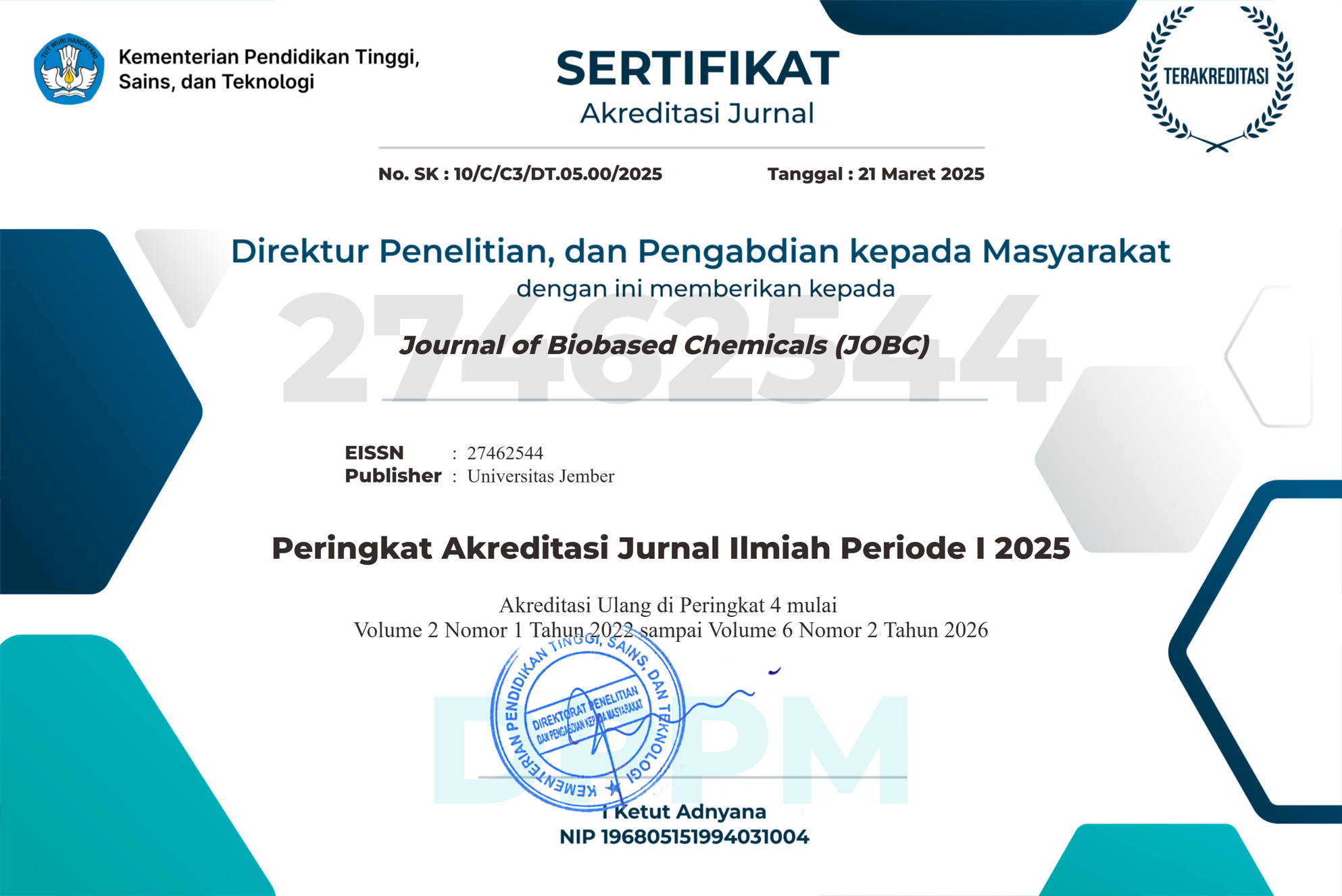Dragon Fruit Peel Anthocyanin Extraction Using the Solvent Extraction Method
DOI:
https://doi.org/10.19184/jobc.v4i1.841Keywords:
Dragon Fruit Peel, Anthocyanins, Solvent ExtractionAbstract
Dragon fruit peel contains 26.4587 mg/L of anthocyanin. Anthocyanins have benefits such as natural dyes in the food sector and are used as an alternative to synthetic dyes which are of course also safer for health. The aim of this research was to determine the effect of extraction variables (time, solvent concentration, and particle size) on the anthocyanin content of dragon fruit peel from extraction results using the Solvent Extraction method. In general, the definition of Solvent Extraction is a technique of separating one or several materials from a solid or liquid with the help of a solvent. So, Solvent Extraction is the transfer of a dissolved substance (solute) between two solvents that do not mix with each other. The extraction process begins with the coagulation of the extract with the solvent, then contact occurs between the material and the solvent so that on the flat surface of the interface between the extraction material and the solvent, mass deposition occurs by diffusion. The extraction process starts with 25 grams of dragon fruit peel powder with varying particle sizes (30, 60, and 80 mesh) then put into an Erlenmeyer tube. Then 250 ml of citric acid solution was added with varying concentrations (0.1 M; 0.2 M; and 0.3 M). After that, the Erlenmeyer flask is placed on the stirrer to stir for (90, 120, and 150 minutes). After that, the extraction results are filtered using filter paper to produce a filtrate. Then the filtrate is precipitated to obtain anthocyanin extract. After that, it was analyzed using a spectrophotometric method to calculate anthocyanin levels. In this study, the best results were obtained, namely 11.439 mg/L. With optimal extraction conditions at a particle size of 60 Mesh, time of 150 minutes, and a solvent concentration of 0.5 M citric acid.








